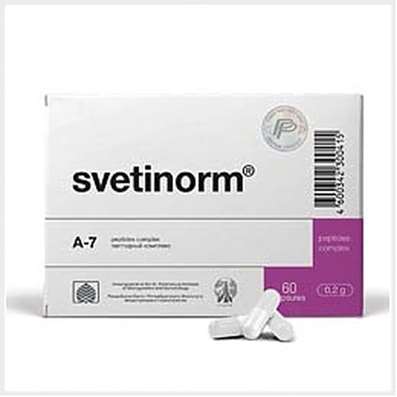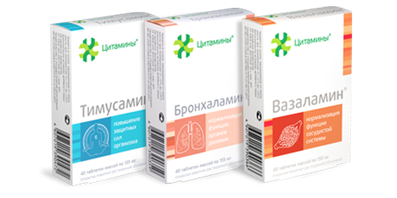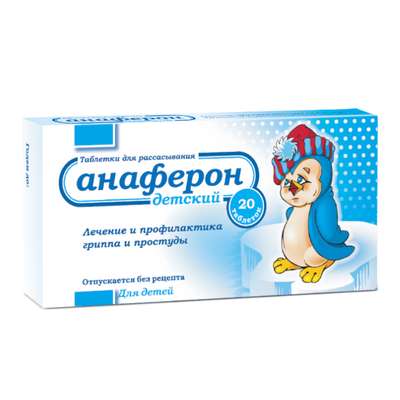Instruction for use: Smecta
I want this, give me price
Active substance: Smectite dioctaedric
ATX code A07BC05 Diosmectite
Pharmacological group
Adsorbents
Other gastrointestinal agents
Antidiarrhoeic agents
Nosological classification (ICD-10)
A09 Diarrhea and gastroenteritis of allegedly infectious origin (dysentery, bacterial diarrhea)
Bacterial diarrhea, Bacterial dysentery, Bacterial infections of the digestive tract, Bacterial gastroenteritis, Diarrhea bacterial, Diarrhea or dysentery of amoebic or mixed etiology, Diarrhea of infectious genesis, Diarrhea on the background of antibiotic therapy, Traveler's Diarrhea, Travelers diarrhea due to changes in diet and habitual diet, Diarrhea due to antibiotic therapy, Dysenteric bacteriocarrier, Dysenteric enteritis, Dysentery, Dysentery bacterial, Dysentery mixed, Gastrointestinal infection, GI tract infections, Infectious diarrhea, Infectious Disease of the GI tract, Infection of the gastrointestinal tract, Infection of the biliary tract and gastrointestinal tract, GI tract infection, Summer diarrhea, Nonspecific acute diarrhea of infectious nature, Nonspecific chronic diarrhea of infectious nature, Acute bacterial diarrhea, Acute diarrhea in food poisoning, Acute dysentery, Acute bacterial gastroenteritis, Acute gastroenterocolitis, Acute Enterocolitis, Subacute dysentery, Diarrhea chronic, Refractory diarrhea in AIDS patients, Staphylococcal enteritis in children, Staphylococcal enterocolitis, Toxic diarrhea, Chronic dysentery, Enteritis, Enteritis infectious, Enterocolitis
K30 Dyspepsia
Fermentation dyspepsia, Hyperacid indigestion, Putrefactive indigestion, Dyspepsia, Dyspepsia, Dyspepsia of nervous origin, Dyspepsia in pregnant women, Dyspepsia fermentation, Dyspepsia putrefactive, Dyspepsia medication, Dyspepsia due to diseases of the digestive system, Dyspepsia due to impaired motility of the gastrointestinal tract, Dyspepsia due to unusual food or overeating, Dyspeptic phenomena during pregnancy, Dyspeptic Syndrome, Gastric indigestion, Delayed emptying of the stomach, Delayed digestion, Idiopathic indigestion, Acid dyspepsia, Disturbance of the upper GI tract motility, Indigestion, Nervous indigestion, Non-ulcer dyspepsia, The feeling of heaviness in the stomach after eating, Postprandial functional dyspepsia, The processes of fermentation in the intestine, Stomach upset, Gastrointestinal disorders, Digestive disorders, Disorders from the digestive tract, Stomach upset, Indigestion disorder, Indigestion in infants, Symptoms of dyspepsia, The syndrome of putrefactive dyspepsia, Syndrome of putrefactive dyspepsia in infants, Syndrome of insufficiency of digestion, Syndrome of nonulcer dyspepsia, Toxic indigestion, Functional dyspepsia, Functional indigestion, Chronic indigestion, Chronic episodes of dyspepsia, Essential dyspepsia, Dyspeptic disorder
K52.2 Allergic and alimentary gastroenteritis and colitis
Alimentary Colitis, Allergic Colitis, Gastroenteritis alimentary, Gastroenteritis allergic, Allergic diarrhea, Allergic gastroenteropathy, Medicinal gastroenteritis
K59.1 Functional diarrhea
Diarrheal syndrome, Diarrhea, Diarrhea with prolonged enteral feeding through the probem, Prolonged diarrheam Nonspecific diarrhea, Acute diarrhea, Diarrhea, Syndrome of diarrhea, Functional diarrhea, Chronic diarrhea, Diarrhea with an electrolyte balance disorder, Chronic diarrhea, Diarrhea of non-infectious genesis, Diarrhea after a gastroectomy, Diarrhea in children, Persistent diarrhea, Diarrhea (diarrhea), Enterocolitis of non-infectious origin
R12 Heartburn
R14 Flatulence and related conditions
abdominal distention, flatulence, pronounced flatulence, Gases in the postoperative period, degassing bowel before diagnostic studies, degassing intestine before X-rays, gas delay, Excessive formation and accumulation of gases in the digestive tract, brash, Flatulence, Flatulence with increased gas formation in the digestive tract, Flatulence in infants, Flatulence in newborns, Flatulence caused by fatty or unusual food, Flatulence caused by disease of the digestive tract, belching, The feeling of bloating, The feeling of fullness, Increased flatulence, The increased gas formation and accumulation of gases in the digestive tract, Fullness in the epigastrium, Feeling of fullness, The feeling of heaviness in the stomach, Flatulence in the gastrointestinal tract, Increased production and accumulation of gases in the digestive tract
Y57.9 Adverse reactions in the therapeutic use of medicinal products and medicines, unspecified
Allergic drug reactions, Allergic reactions to drugs, Allergic reactions to medication, Allergic reactions to taking drugs, Allergic reactions to reception of radiocontrast agents, Allergic reactions due to medication, Anaphylactic reactions to medications, Anaphylactic reactions to taking drugs, Hepatotoxic effect of drugs, Idiosyncrasy to drugs, Idiosyncrasy toxic, Drug addiction, Drug-induced leukopenia, Drug-induced liver damage, Medicinal damage of the lungs, Acute allergic reaction to drugs, Toxic reactions to medicinal substances, Allergy medication, Hepatotoxic substances, Diarrhea medication, Drug fever, Medicinal intolerance, Undesirable effects of drugs
Z72.4 Unacceptable diet and bad habits in nutrition
Inadequate nutrition, Irregular nutrition, Unbalanced diets, Dyspepsia due to unusual food or overeating, Long-term dietotherapy, Prolonged or low-calorie diets, Gastrointestinal disorders due to a violation of diet, Binge eating, Food poisoning, Errors in the diet, Compliance with diets, Compliance with a strict diet, Special diets
Composition
Powder for preparation of suspension for oral administration (orange) 1 sachet
active substance:
smectite dioctahedral 3 g
auxiliary substances: orange flavoring - 0,01 g; vanilla flavoring - 0.05 g; dextrose monohydrate 0.667 g; sodium saccharinate - 0.021 g
Powder for preparation of suspension for ingestion (vanilla) 1 sachet
active substance:
smectite dioctahedral 3 g
auxiliary substances: vanillin - 0,004 g; dextrose monohydrate 0.749 g; sodium saccharinate 0.007 g
Description of dosage form
Powder: from greyish-white to light grayish-yellow color with a smell from weak nonspecific to weak vanilla.
pharmachologic effect
Pharmacological action - adsorbing, antidiarrheal.
Pharmacodynamics
The drug is an aluminosilicate of natural origin, has an adsorbing effect. Stabilizes the mucous barrier of the gastrointestinal tract, forms polyvalent bonds with mucosal glycoproteins, increases its number, improves cytoprotective properties (with respect to the negative effects of hydrogen ions of hydrochloric acid, bile salts, microorganisms and their toxins). It has selective sorption properties, which are explained by its discoid-crystal structure; adsorbs bacteria in the gastrointestinal tract, viruses. In therapeutic doses does not affect intestinal motility. Diosmectitis is radiopaque and does not stain the stool. Aluminum in the composition of smectite is not absorbed from the digestive tract, incl. with gastrointestinal diseases, accompanied by symptoms of colitis and colonopathy.
Pharmacokinetics
Not absorbed, displayed unchanged.
Indications
For adults and children (including infants):
acute and chronic diarrhea (allergic, medicinal origin, violation of diet and quality of food), diarrhea of infectious genesis (as part of complex therapy);
symptomatic treatment of heartburn, bloating, discomfort in the abdomen and other symptoms of dyspepsia accompanying diseases of the digestive tract.
Contraindications
hypersensitivity;
intestinal obstruction;
intolerance to fructose;
glucose-galactose malabsorption;
saccharose isomaltase deficiency.
With caution: severe chronic constipation in history.
pregnancy and lactation
Smecta® is approved for use in pregnant and lactating women. Correction of dosage and reception mode is not required.
Side effects
In clinical studies, reported rare cases of constipation. In all cases, this phenomenon was poorly expressed and occurred after an individual change in the dosing regimen.
In routine practice, very rare cases have been reported of hypersensitivity reactions (including urticaria, rash, itching, or edema of Quincke).
Interaction
The drug can reduce the rate and degree of absorption of concomitantly taken drugs. It is not recommended to take the drug Smecta simultaneously with other drugs.
Dosing and Administration
Inside.
Acute diarrhea
Children, including infants: up to 1 year - 2 sachets / day for 3 days, then - 1 sachet / day; over 1 year - 4 sachets / day for 3 days, then - 2 sachets / day.
Adults: recommended dosing regimen - 6 bags / day.
Other indications
Children, including infants: up to 1 year - 1 sachet / day; 1-2 years - 1-2 bags / day; over 2 years - 2-3 bags / day.
Adults: 3 sachets / day.
A course of treatment is recommended for 3-7 days.
When esophagitis, the Smecta preparation should be taken after a meal, with other indications - between meals.
For children, the contents of the bags are dissolved in a baby bottle (50 ml) and distributed to several receptions during the day or mixed with any semi-liquid product (porridge, mashed potatoes, compote, baby food). For adults, the contents of the bags are dissolved in 1/2 cup of water, gradually pouring powder and evenly stirring it. The prescribed dose is divided into 3 doses during the day.
Overdose
Overdose can cause severe constipation or bezoar.
special instructions
It is recommended to observe the interval 1-2 hours between taking the drug Smecta ® and other drugs.
They are used with caution in patients with severe chronic constipation in an anamnesis.
In children with acute diarrhea, the drug should be used in combination with rehydration measures. If necessary, adults can also be prescribed therapy with the drug in combination with measures for rehydration.
A set of rehydration measures is assigned depending on the course of the disease, age and patient characteristics.
Influence on the ability to drive and work with machinery. No information.
Form of issue
Powder for the preparation of a suspension for ingestion (orange, vanilla), 3 g. 3.76 g of the drug are placed in sachets of paper, laminated with aluminum foil and PE. 10 or 30 bags in a cardboard box.
Conditions of leave from pharmacies
Without recipe.
Storage conditions
At a temperature of no higher than 25 ° C.
Keep out of the reach of children.
Shelf-life
3 years.
Do not use after the expiry date printed on the package.

 Cart
Cart





